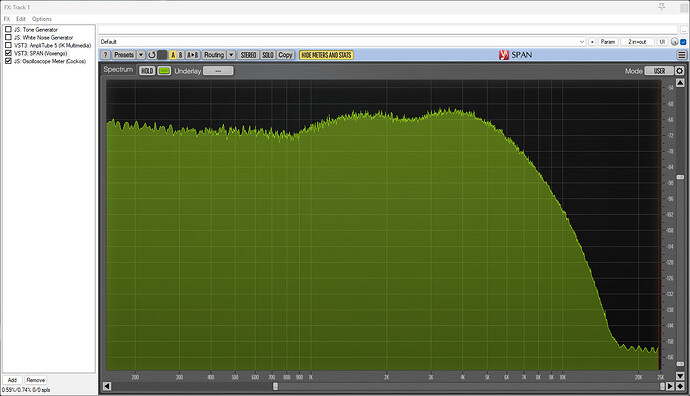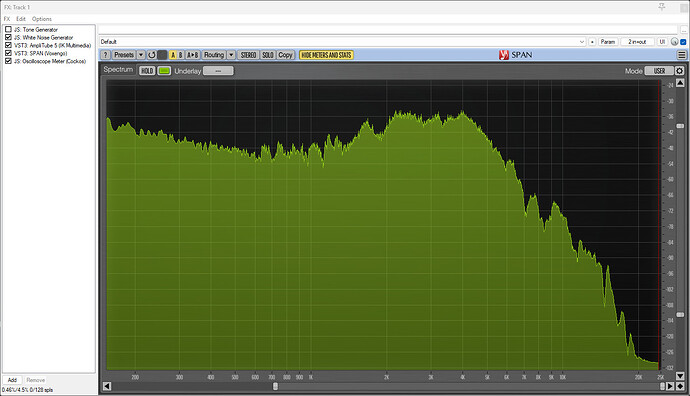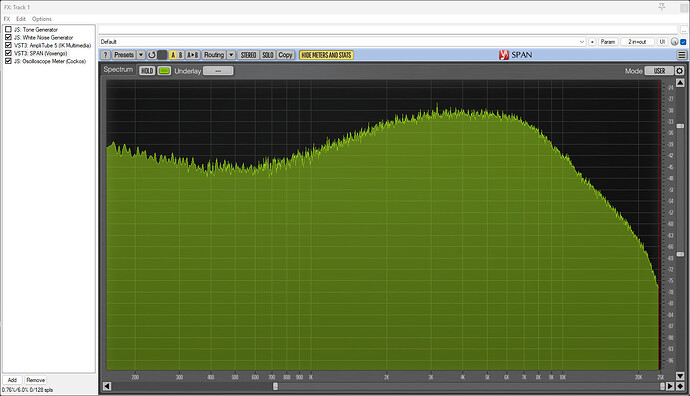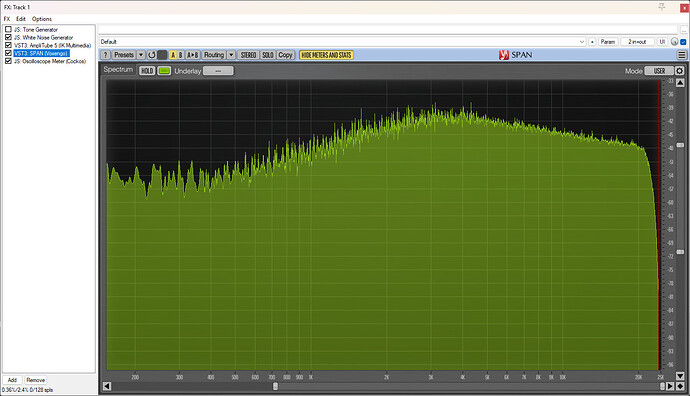Well, I am currently pursuing a perfect overdrive algorithm for my Daisy Seed guitar pedal. I was wondering how the serious guys from Boss, Fender and DAW plugins like Amplitube do it, so I started experimenting with my Fender Mustang I, Katana MkI and Amplitubf in repear:
It looks simple enough. When I designed my pedal I eventually ended up with an Anti-Derivative Hard Limiter with X4 up sampling for the distortion effect and X4 up sampling for the overdrive to avoid aliasing.
When I looked at the Katana (when using it as an audio interface or through the line-out to my Behringer interface) I noticed this:
this is the clean amp settings with white noise input generated by the daisy seed. I’ll spare you the images from the Fender Mustang as they are roughly the same. It looks like an FIR filter cutting everything above 6KHz. I know that a speaker cabinet will have a similar frequency response, but could it be that these modelling amps just lowpass everything regardles of the output? Why use a filter if you are driving a real speaker?
Furthermore, it does not look like an IR of a cab or an amp, just some EQ shaping and the steep filter. I probably just expected more from BOSS and FENDER…
Any way, I went to Amplitube and checked the DAW white noise thru a high gain MarkV amp with a matching cabinet:
and with the cab turned off:
clearly there is an IR file for the cab and again some EQ (with the tone-stack) for the amp. The steep roll of the AAF is much higher I think because it is not similiar to other amps in amplitube - like this princetone clean without a cabinet:
so does any one know why would they cut the higher frequencies? does it really have no effect on the sound? everything we hear is up-to 8-10KHz at best? I should point out that the sound quality of these amps is great and they are considered among the best modelling amps.
From designing a non-linear effect point of view, it would be much easier to simply cut all the high frequency with a relatively simple FIR and minor or no up sampling and fancy math tricks…
Next post I’ll try to show how even the best plugins and modelers don’t really mind the aliasing artifacts.




